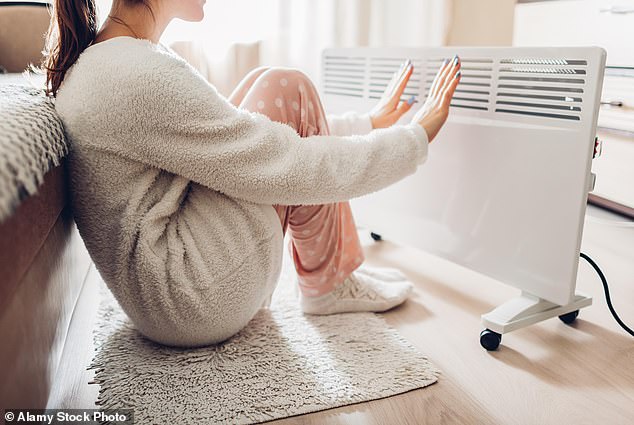This is the real reason Australian homes are so cold in the winter – and what you can do about it now
Low temperatures, the cost of living crisis and poor home design mean many Australians are feeling the harsh winter chill more than ever this year.
Dr. Nicola Willand from RMIT University School of Property, Construction and Project Management spoke to FEMAIL about the ‘great freeze’ sweeping the country and the flaws making homes Down Under colder than the WHO approved 18C.
She believes this is due to a combination of factors, namely Australian legal standards being lower than the rest of the world and a lack of awareness about the link between cold weather and health.
“First, energy was historically plentiful and relatively cheap, so households and regulators were less concerned about heating affordability than they are today,” she told FEMAIL.
‘Countries like Europe have had energy crises, such as the oil crisis in the 1970s, which have threatened energy security, increased energy costs and led to energy efficiency measures.’
Insulation is crucial whether you are looking for a cooler or a warmer home
Secondly, she said, there is still little awareness in Australia about healthcare and cold homes.
“In contrast, the term ‘fuel poverty’ was coined in Britain because the excessive winter mortality rate in Britain was so much higher than in other, much colder countries,” Dr Willand continued.
‘Research found that British homes were less insulated and colder than Scandinavian homes. In Germany, for example, the first insulation requirements were introduced in the 1950s to reduce the risk of mold.

Dr. Nicola Willand is from RMIT University School of Property, Construction and Project Management
‘These findings led to a concerted effort to improve the thermal performance of homes in Britain. The first home insulation regulations were introduced in Australia in the 1990s.’
Finally, Dr. Willand said regulators must “balance stakeholder demand with housing supply and affordability.”
“Australia has a housing affordability crisis and energy efficiency measures can increase the cost of housing, in part because many of the products have to be imported,” she said.
Dr. Willand’s advice is to work as best you can to have a well-insulated home – something that will be useful in both cold and very hot weather.
‘Shading windows with fixed sun blinds or smart planting will also ensure that the sun does not penetrate the house in summer, and professional placement of openable windows and doors will enable cross ventilation for natural and free cooling’, she said.
‘Fly screens and security doors will also ensure that windows are left open overnight to take advantage of the cool night air.’

Heating is becoming increasingly less affordable due to the cost of living crisis
Draft sealing products are available at any hardware store. They are affordable and can be installed by the householders themselves.
The topic has been in the spotlight on the internet lately, with much of Australia reeling from extreme lows and ‘polar blasts’. Many compared their houses to ‘seven’ with many holes compared to the well-insulated houses in the Northern Hemisphere.
One Redditor said he believed Australian builders are dramatically cutting costs when building new homes – leading to “cutting corners on things that are invisible, like quality insulation”.
Those who cannot afford traditional heating or insulation measures such as double glazing are turning to simpler heating solutions.
Electric blankets use much less energy and are a cost-efficient alternative to traditional heating appliances.
Covering all windows and using door hoses can also help seal a home and prevent cold air from coming in or warm air from going out.
One Aussie said she cooks more with her oven during the winter months and then leaves the oven door open so the heat can spread throughout her home.
Some also suggested purchasing clear insulation film, which can be applied relatively cheaply to all window panels.
